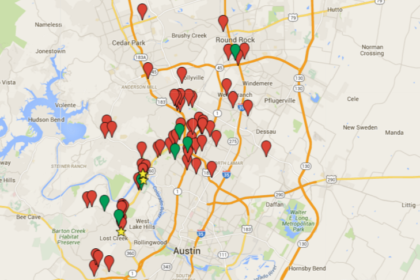
There is a frequently heard mantra in Austin that we’re not like Silicon Valley (that we don’t want to be like Silicon Valley) and though I’m of the mind that disagrees with that, considering Silicon Valley an industry of which we’re a part rather than a merely a specific location, what you can’t refute is that geographically, Austin really is shaping up with the Valley’s San Francisco-like density and exuberance in one place, complemented with the separate Palo Alto-like capital, resource, and later-stage tech epicenter.
The explosion of Austin’s downtown in recent years has so overshadowed the rest of Austin that it struck me with some concern, in a recent chat with some Chicago startup vets, that the world increasingly perhaps perceives Austin’s startup and tech community as what is downtown. Indeed even locally, I’ve met with younger entrepreneurs and newcomers who remark with surprise upon discovering NW Austin that they had no idea how significant and pivotal role it plays.
Of course, those that live out that direction are aware of it. I live near Lake Travis (about 40 minutes NW of the city) and it’s common knowledge that a week or two hanging out at specific coffee shops along the 360 corridor will result in your having met the great majority of Austin’s Venture Capitalists. But as it became increasingly clear that the perception of Austin is being defined by downtown (not in a negative way mind you, more like how the focus of and frequency of attention on news makes one perceive something as more dominant than it might actually be), I became certain that an important piece of the Austin story needs to be clear.
Austin’s Tech & Startup Corridor: Northwest Austin
The neighborhood in which I find myself, Steiner Ranch, has an inside joke that it’s where all the Silicon Valley transplants live. I can’t disagree really, it is where I settled. But the thought has merit as topographically, Central Texas’ Hill Country is a little reminiscent of Silicon Valley’s hills and the bay. Lake Travis’ enormity and the winding Lake Austin pours water throughout this region while the hills draw cyclists the likes of which I’ve only ever seen cruising Sand Hill Road and San Francisco. In my neighborhood alone, counted as notable Angel Investors and tech Founders are around 100 whom I know personally; with whom our kids play and we collectively fight traffic into the city. But more relevant to the consideration of the NW Austin region is that River Place and West Lake Hills, Steiner’s neighbor communities, bluntly, comprise the highest per capita income neighborhoods: investors – akin to Palo Alto.
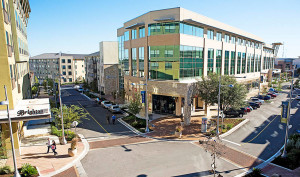 Recently, HPI Real Estate Services and Investment’s Richard Paddock shared that in 2015, over 650,000 square feet of new office space was developed in the area. City and Commercial Property planning (well, everyone here really) considers The Domain and Arboretum area of Austin (around 183 and 360 freeways) the future second city center, with higher density building already going in and higher rising building being planned. It makes sense, to draw comparisons to a characteristic of Ancient Rome that helped drive their dominance, NW Austin is in many ways where all roads meet as 35 comes down from Dallas, 183 heads to Cedar Park, and 360 and Mopac funnel most commuters north and south.
Recently, HPI Real Estate Services and Investment’s Richard Paddock shared that in 2015, over 650,000 square feet of new office space was developed in the area. City and Commercial Property planning (well, everyone here really) considers The Domain and Arboretum area of Austin (around 183 and 360 freeways) the future second city center, with higher density building already going in and higher rising building being planned. It makes sense, to draw comparisons to a characteristic of Ancient Rome that helped drive their dominance, NW Austin is in many ways where all roads meet as 35 comes down from Dallas, 183 heads to Cedar Park, and 360 and Mopac funnel most commuters north and south.
Don’t misunderstand me, my intention is not to suggest SE Austin doesn’t have many of the same qualities and growth, I’m only pointing out that the characteristics of this region: topographically, demographically, economically, transportation wise, and industry specific, puts Austin’s “Silicon Valley” in NW Austin.
| And remarkably, and even a little surprisingly, the workforce makeup supports that premise with nearly 10% of area residents working in tech (only 13% of Silicon Valley’s population works in tech!) and explosive future job growth that exceeds the rate of job growth in N. California.
Take a look at this map and you can envision how driving around here feels like driving around Mountain View and San Mateo, with Apple, Samsung, Cisco, Google, IBM, Microsoft campuses and more making it clear that you’re in tech country. And that’s the short list, I’ve organized my map to make it a little easier to digest as there is so much here: Companies, Key Locations, and Investors. Key Locations?It should be clear that NW Austin is not just corporate tech as, possibly, the greater majority of Austin’s tech startups are actually being built throughout here. Evidence of that is seen in the coworking, incubator, and even coffee shop culture that’s evolved in the region, putting developers, founders, marketing professionals and more right in the back yard of the big tech companies. IBM’s campus, up near the Domain, is considered one of the preferred tech event spaces throughout Austin given it’s significant size and centralized location to so many of the surrounding tech companies from as far away as Cedar Park, Round Rock, and Bee Caves. Tech Ranch and the International Accelerator serve many of the regions earlier stage founders and coffee spots such as Lola Savannah, Monkey Nest, 360 Uno, and yes, Starbucks, at the Arboretum, are seemingly permanently occupied by tech professionals and investors. |
What makes Austin such an incredibly appealing destination for tech entrepreneurs and investors is that all of the elements of a sophisticated tech economy are here, when you consider that different regions play different roles in fostering, funding, employing, founding, and maturing technology.
Bottom line, though many Austinite’s cringe at the parallels many of us here draw to the fact that our tech community is indeed quite a bit like Silicon Valley, frankly, when you’re wondering why Austin?? you have to appreciate that the explosive growth of tech and tech investment in Texas is largely the result of NW Austin where capital, technology, and tech professionals really dominate the scene (and I haven’t even begun to scratch the list of all the early stage tech startups in the region!).
Don’t let my list be short, if you’re in the area or know of a company or resource that is, let me know so we can create valuable resource for everyone.
I want to invite you to join me in such discussions live and together.
Join me online here


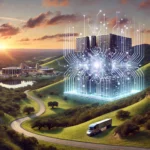
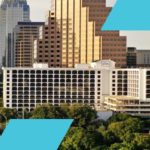
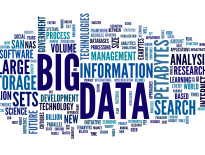
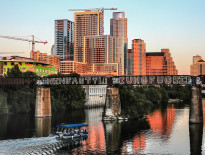
I was going to recommend TechShop but I’m happy to see its already on the list. I’m part of Pretty Smart Homes and we do much of our work out of there.
Looks like I need to get Pretty Smart Homes on the list!
NW Austin doesn’t get the same cache as Downtown, but has been the home to many startups and tech giants since the 1960’s.
I think the Red Line at the Kramer/Domain Station will become the Cal train connection between the suburban tech concentration and the downtown. Well probably need to develop a public/private shuttle operation to move people between the station and the key locations you’ve identified. As in CA, the investors will still drive between the hubs, but the workers will be drawn to transit and rideshare. I think completing this transportation piece will reinforce the parallel dual-hub model you’ve observed.
Absolutely Richard and yet too, I think it’s relevant to consider that our transportation (and parking limits) are precisely why this is occurring. My analogy to downtown Austin as San Francisco is a reflection of that: it costs increasingly more to get there (in time) and where 6 years ago you could park for free, it’s approaching $20 if you can even find any.
So what SHOULD many (certainly not all) growing tech companies do? Reduce their operating costs (real estate) and create efficiency for their work force by being closer and more accessible to where those tech professionals are found.
Good post… Keep Austin vibrant and viable
I keep telling my real estate clients that the center of Austin is actually the intersection of mopac and 183.
I think very few argue otherwise. There are elements of downtown for which it’s the center but geographically, economically, it’s hard to suggest it’s not.
Perhaps. I grew up in the Bay Area before there was a tech scene in SF and I think it happened in response to the congested, car-oriented suburban lifestyle. There were too many tech people who didn’t want to live in that and/or preferred to live in the City. And so the corporate sitings are in a feedback loop with the cultural preferences of their most critical, irreplaceable human resources. I think your dual-hub model is insightful because it realizes the intransigence of sub-cultures–the money likes rolling hills and fancy cars, the large companies need large, relatively inexpensive offices, and the workers and executives come with their own disposition–some are negotiable and some aren’t. I know many people who won’t commute from the City to work on the peninsula and I know just as many who wouldn’t live in the City even if they could afford it. Then finally, there are the eco-system companies that gather around the hub which is more relevant to them while simultaneously reinforcing the hub. It’s interesting to note that both regions have companies with outposts in the “other’ hub, probably to accommodate or mitigate strong cultural preferences and/or the need to be near their professional networks (birds of a feather).
Love this post Paul. Doesn’t hurt that I’m one of those Steiner Ranchers.
I think you’re missing Amazon at the Domain.
we need to reconnect now that Diversity Fund is live with deals.
Damn MarkD, that was a big one to miss. Fixed!
Raytheon|Websense is in Stonelake complex…
When helping companies open offices in Austin, I always point to the Arboretum area as the center of our city. If you want to pull talent from the whole area including Round Rock and Cedar Park, you need to be in the center… which is not downtown.
Well that’s an embarrassing miss Larry as I’m poker buddies with Neville Letzerich. Fixed!
It’s an interesting take for sure. I have been wondering where the next bubble around Central Texas would be. I am unfamiliar with NW Austin, but can see why we would need to look to our own “Palo Alto.”
Good question: Bubble regionally or industry wise? I think that real estate downtown is too expensive given the availability of real estate just a mile outside of town. There’s the regional bubble. It’s expensive elsewhere (Domain, Lake Travis, West Lake) but the demand isn’t there: much of that real estate sits empty. Industry is a tougher question.
Can start referring to as Silicon Hills……..
ugh… no! 🙂 I despise the whole “Silicon X” thing. It’s a way different regions try to say, “hey, we are like that, but we’re not that.” Besides, silicon is cold, hard, and culturally antiquated. Let’s find a new identity.
I am looking to come and visit Austin in the coming week! I am very excited and looking forward to meeting and venturing to some of these places. Anymore insight since I will be a newcomer will be great.
Thank You!
My son just got an offer of employment (software developer) from GM. Are there some really progressive start ups that he should apply to? He is currently in school at A&M and graduates in May
Chris there are more incredible startups in Austin than one can shake a stick at. It’s not being considered the startup hub of the world for nothing. Best way to approach startups is to distinguish what matters to him. There are lots of developers, what in particular does he want to be doing (industry, niche, mission, etc.)?
This may also be valuable to peruse: https://www.austinstartuplist.com/
I’m late commenting, but I agree that whole area from Riata to IBM to Google to Tech Ranch, there’s a lot of activity. As the traffic starts to gridlock, people will have to relocate accordingly.
It will not be long before MoPac/183 is the Blockchain Axis. This is another fantastic article Paul. Thank you.
Thanks Richard! It’s need a refresh but it’s still fairly valid and accurate.
I haven’t worked out the Blockchain Axis yet. You think there? Have a few other regional characterizations in the works. Nail down Blockchain with me and write up something together? I suspect closer into the urban core…. Rosedale / Hydepark
need to add @droolerapp to that map
Cheers. It’s in need of a massive update, I should do that. Truer now more than ever.
Interesting
Bit out of date at this point but still valid